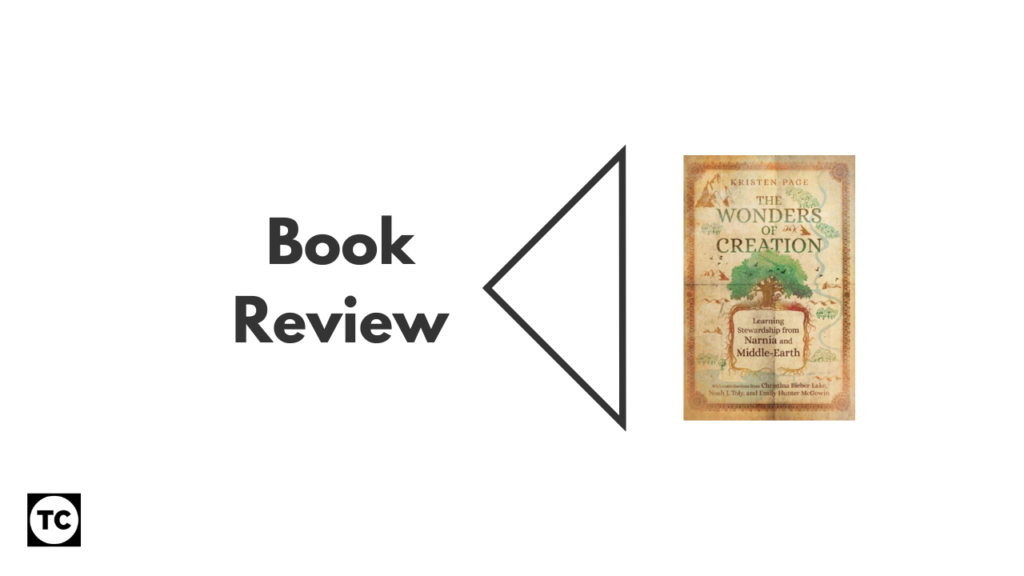I picked up this little book from IVP USA because it combines one of my big theological interests (creation and stewardship) and two fantasy worlds I know well (Narnia and Middle Earth). This was a classic example of not judging a book by it’s cover – the back cover copy informs the reader that this is a version of lectures given, more information about which is provided at the start of the book.

At around 128 pages, The Wonders of Creation is a short book – so this will be a short review! Page opens with a good question: “Could literary landscapes teach us to see creation in a new way and a possibly even motivate readers toward environmental stewardship?“. It’s an interesting question – how can fiction help us with the real world, particularly in engaging with a challenge or crisis? Over the intervening pages, Page and her interlocutors explore this in detail. Page writes as a biologist who loves literature, and I resonate particularly with her interaction with the hobbit hole of Bilbo Baggins (p. 15) and the forests/trees of Narnia: “Perhaps our response to the devastating scene in ‘The Last Battle’ is more compassionate than our response to the devastation of real landscapes because in the story we understand the trees to be “alive” and and able to speak” (p. 21). Page peppers her pages with real world examples of climate crisis – this reader found these more poignant alongside the fictional examples, and this is one way in which this book could have a good impact.
Though the fictional worlds of Tolkien and Lewis (for the fans, Page does reference Lewis’s science fiction) are a key part, this is definitely a book that is engaged in the real world. It’s a distinctively Christian book, rooting creation care in the way of discipleship (a la John Stott/Laura Yoder), and challenging the reader directly: “Have you ever considered that caring for creation is a way of loving one’s neighbour?“(p.46). The vehicle of literature, and fiction in particular, is a helpful way in to thinking about these things: “Stories are important because the listener is in a relationship with the stroyteller and thereby experiences events in authentic ways” (p.51). These stories evoke emotions – one of which is ‘wonder’, and it is here that Page emphasises what she is hoping the book will do: “Wonder begins the transformative work. As we pay close attention to nature, we are more likely to notice wonderful aspects of God’s amazing creation” (p. 98) – this attention may start in a fictional world, but Page invites us (including some fine photograph that forms the physical centre of the print book) to take that into the real world, the world we have, “Creation, which is both glorious and fallen” (p.123).
This is a short book and I would have liked Page to have expanded various things more than perhaps the lecture-based format allows – not least discussion of the imago Dei and what it entails for us being human. That said, I think this is a book that could well help to move the dial of evangelical and Christian engagement with creation care and climate change/crisis issues. It is also an interesting model of using fiction – particularly beloved and deep fiction – to seek change in the present world. I would recommend it whether you come from a more ‘interested in creation’ or ‘Lewis/Tolkien’ fan direction – there is enough here for everyone.
Leave a Reply